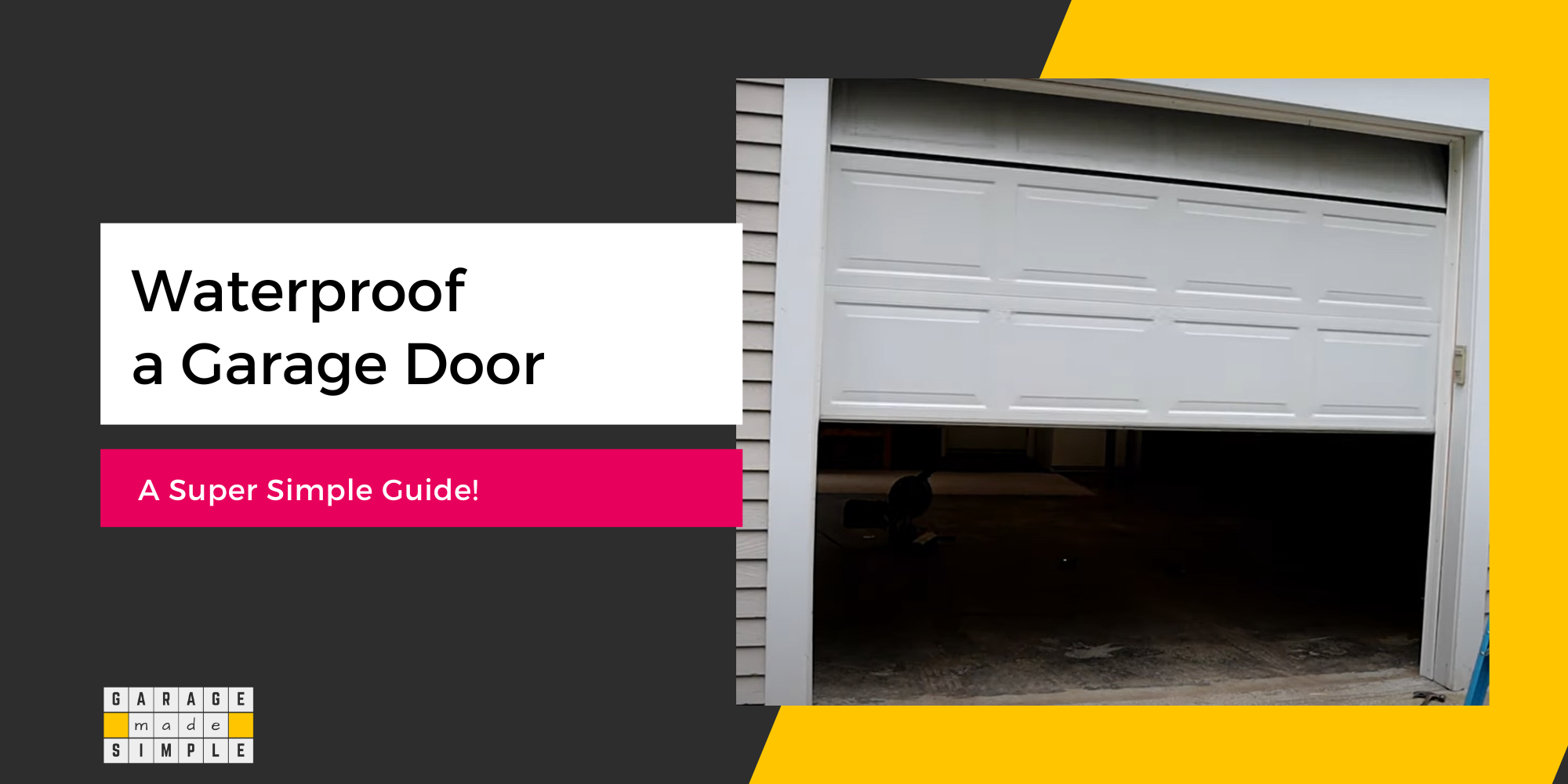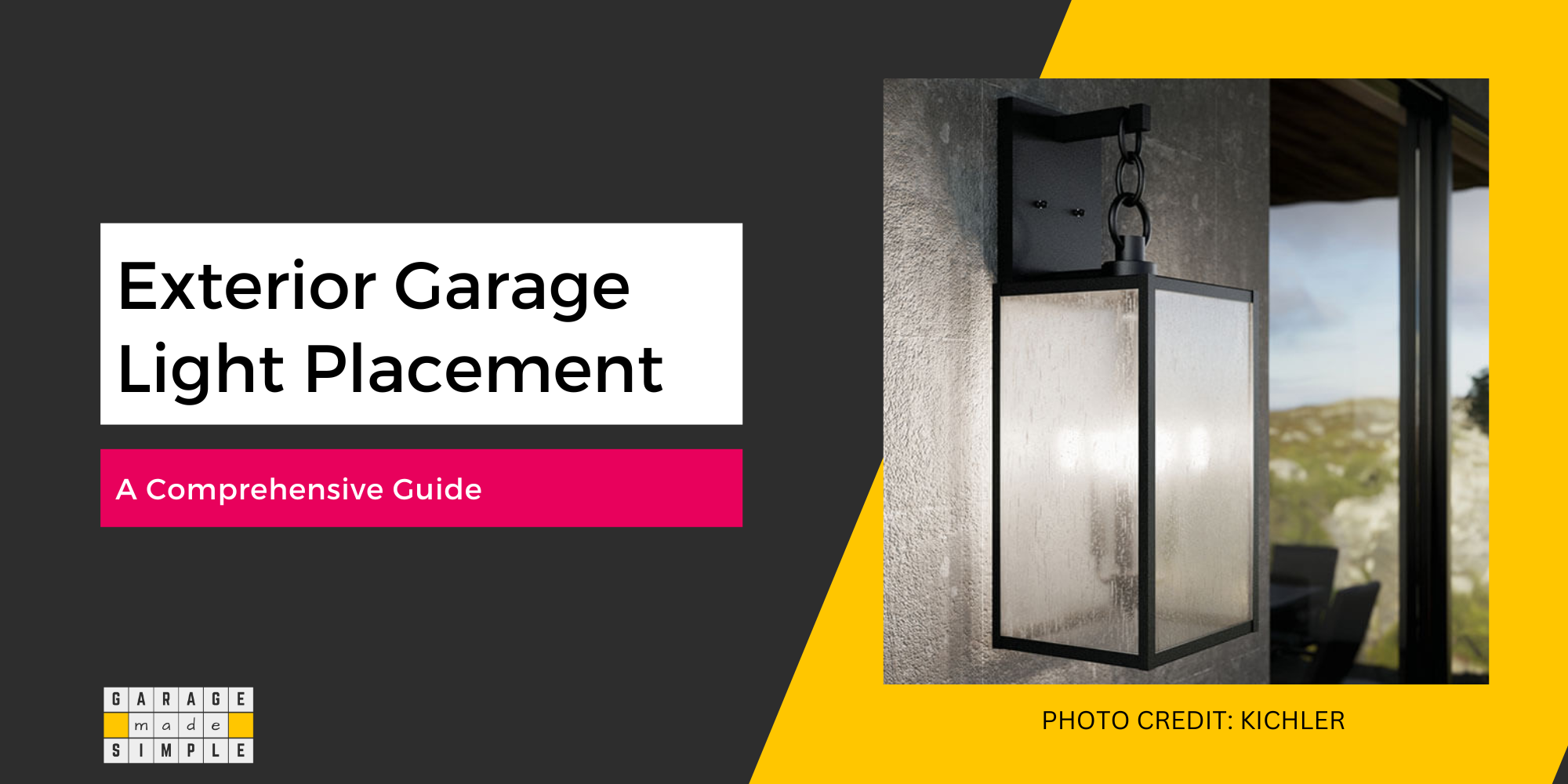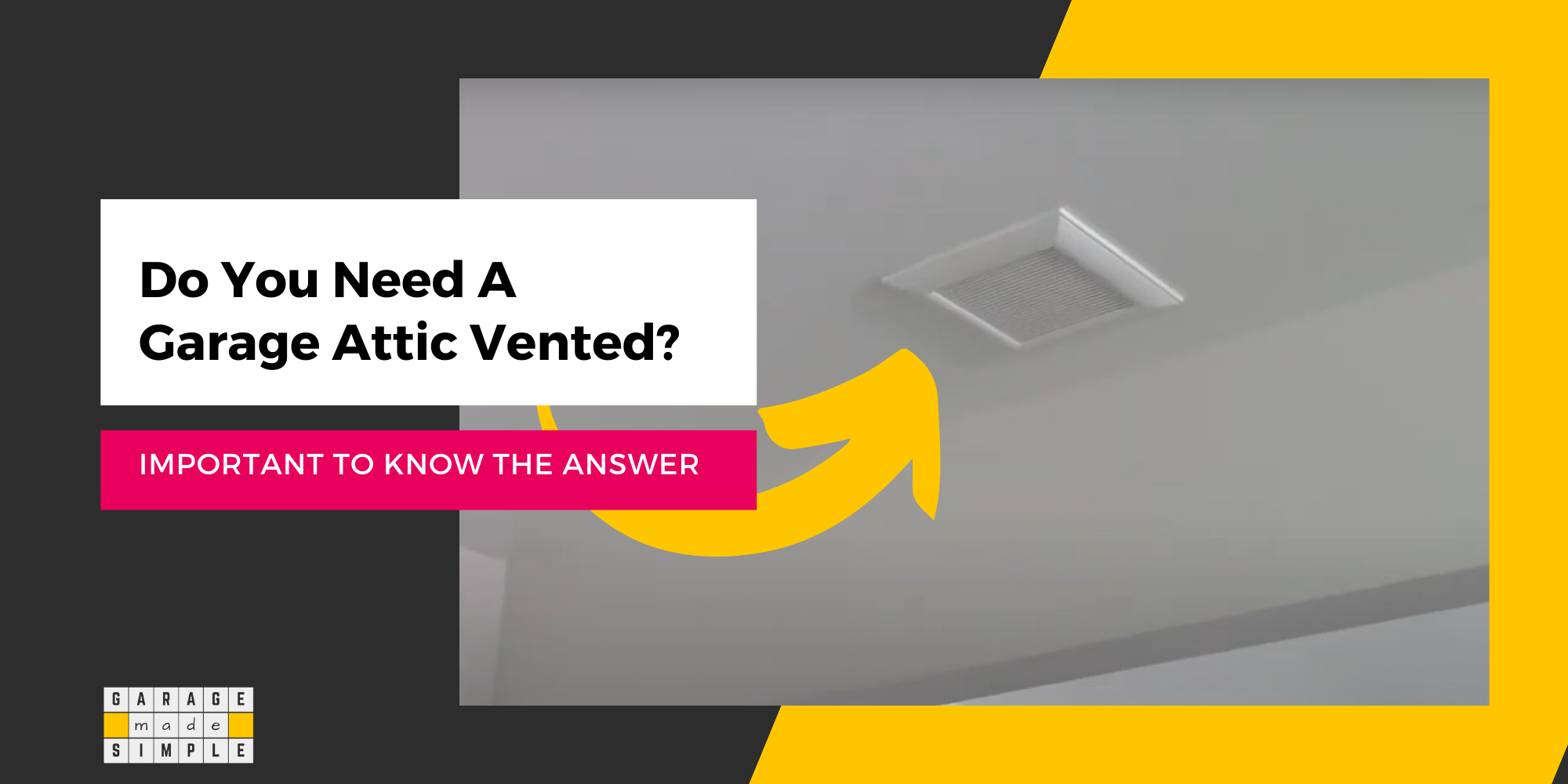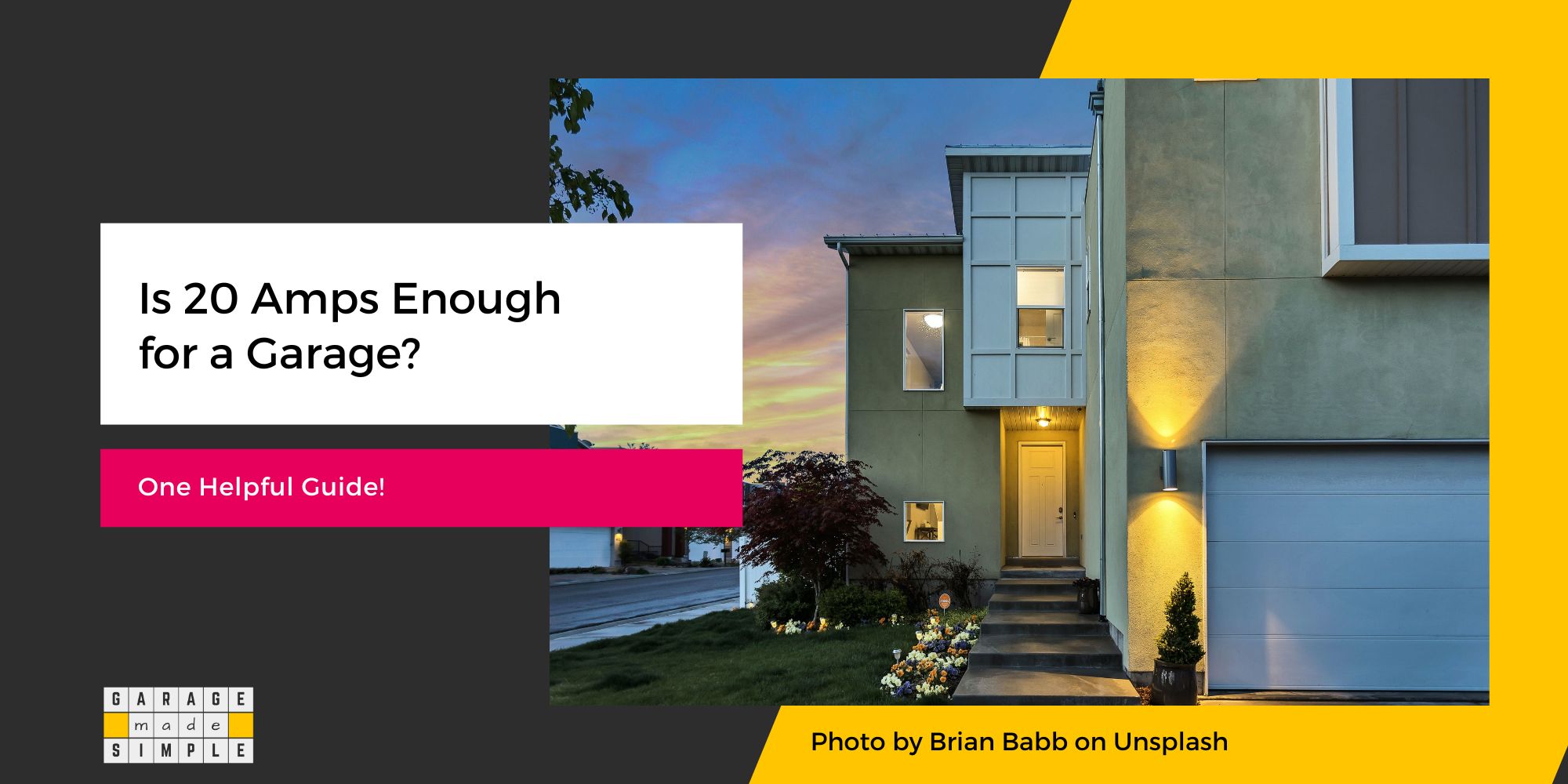10 Top Garage Ventilation Options: What Is The Best Way?
garagemadesimple.com is a participant in the Amazon Services LLC Associates Program, an affiliate advertising program designed to provide a means for sites to earn advertising fees by advertising and linking to Amazon.com . The website is also an affiliate of a few other brands.
What Is the Best Way to Ventilate a Garage?
For getting best results, use several garage ventilation options, to address various needs and climates.
Mini split air conditioner is the best option for garages in hot climates. A combination of floor and exhaust fans will reduce condensation if you live in a cold climate.
If you live in a moderate, breezy climate, keeping garage doors and windows open with screens is an effective and economical solution.
Spending time in a garage with poor air quality can expose you to harmful particles from engine fumes and chemicals. Proper garage ventilation is important as it helps regulate temperature and prevent the accumulation of hazardous gases.
10 garage ventilation options are effective, each in its way. But, the best way to ventilate a garage would be to use the right combination of some of these.
Key Takeaways of Garage Ventilation Options
The table below summarizes the key takeaways of the 10 top garage ventilation options:
| Option | Key Features |
|---|---|
| 1. Garage Windows | * Natural Fresh Air * No Running Cost * Can be a Security Concern |
| 2. Garage Door Screen | * Lets in Fresh Air * Keeps Bugs & Pests Out * Affordable & Convenient |
| 3. Garage Door Vents | * Installed on the Garage Door Panel * Improves Air Circulation * Best to Pair with Exhaust Fan |
| 4. Garage Wall Vents | * Similar to Above * Installed in Garage Wall * Economical |
| 5. Exhaust Fan | * Mounted on a Garage Side Wall * Reasonable Price * Very Effective when Combined with Vents |
| 6. Window Air Conditioner | * High Initial Cost * Expensive to Run * Takes Up Space * Good for Hot Weather |
| 7. Mini Split Air Conditioner | * Costs More But Better Option than a Window AC * Cools, Heats, Dehumidifies, and Ventilates |
| 8. Roof Wind Turbine | * Energy-Neutral * Wind-powered * Cools & Ventilates * Low Maintenance |
| 9. Roof Mount Attic Fan | * Exhaust Fan for the Roof * An Alternative in Low Wind Areas |
| 10. Air Circulating Fan | * Great for Air Circulation * Must Combine with Windows or Vents for Air Change |
Why Is Garage Ventilation Important?
Ventilation is required for comfort, health & well-being. Ventilation is even more important in a garage as it:
Helps Cool a Hot Garage
Good ventilation will help cool down a hot garage. Proper ventilation facilitates air circulation within the garage. Cool air from outside is sucked into the garage closer to the floor. The warm air rises towards the ceiling and is exhausted from there.
A well-ventilated garage can be several degrees cooler than a garage without ventilation.
Reduces Condensation
Condensation on the garage floor happens when warm garage air comes in contact with the cooler garage floor. Air circulation, as a result of good ventilation, keeps the air near the garage floor moving.
The temperature of the air adjacent to the garage floor is less likely to drop below the dew point. The possibility of condensation on the garage floor is reduced.
Condensation makes your garage floors wet, slippery, and a hazard risk.
Removes Fumes & Odors
Your garage is not a garden of roses for sure. Whenever you park your car or start the engine, exhaust fumes are filling up the garage.
DIY projects requiring painting, oiling, greasing, sawing wood, etc. add to the unpleasant & unhealthy odor. Storage of sweaty sports gear, smelly garden supplies, dirty bikes, etc. play their role too.
Without good ventilation, your garage would not smell too good!
Promotes Well Being
Still air can be stifling. However, even a gentle breeze makes you feel better. Why? Air movement helps evaporate the moisture on your skin. The result is a slight cooling of your body.
Gentle motion is uplifting and calming at the same time. Just having gently flowing water or air near you has this magical effect.
Movement is a sign of life and the human brain is hard-wired to respond positively to such signals.
How Much Ventilation Does a Garage Need?
ASHRAE recommends 0.35 air changes per hour. This means that the air in your home should have changed completely 8 times during 24 hours.
ASHRAE (formerly called the American Society of Heating, Refrigerating and Air-Conditioning Engineers) recommends (in its Standard 62.2-2016, “Ventilation and Acceptable Indoor Air Quality in Residential Buildings”) that homes receive 0.35 air changes per hour but not less than 15 cubic feet of air per minute (cfm) per person. as the minimum ventilation rates in residential buildings in order to provide IAQ that is acceptable to human occupants and that minimizes adverse health effects.
Source: The US Environmental Protection Agency (EPA)
If anything, a garage needs even more ventilation than your home!
10 Top Garage Ventilation Options
Garage ventilation requires that fresh air from outdoors must move in and stale, humid, and hot air from within must move out. You need vents for the inlet and exhaust of the air and these can be set up on the door, walls, and roof of the garage.
Passive ventilation systems use natural airflow. Cool air is heavier than warm air. Naturally cool air will stay at the bottom while warm air moves up.
Active ventilation systems push or suck air using mechanical energy. A simple example is a fan.
The top 10 garage ventilation options are:
1. Windows in the Garage
Some garages already have windows. If yours does not have one, you could always install one on one of the walls. Having 2 windows on opposite walls will be even better for natural air circulation.
Keeping garage windows open for ventilation is a simple yet effective option. Having said that you need to:
- Install window screens to prevent bugs & pests from coming in
- Fit strong window grills for security from burglars
- Be aware that open windows will compromise privacy & noise levels
2. Garage Door Screen
The garage door is the biggest opening in your garage. You would get plenty of fresh air if you could leave your garage door open for a few hours a day. You would get plenty of flying and crawling insects too!
The simple solution is to install a garage door screen. Let in fresh air but keep bugs & pests out. Garage door screens can be quite affordable and simple or expensive but with a lot more sturdiness & convenience.
Take your pick from LIAMST Magnetic Garage Door Screen or Liveinu Upgraded Magnetic Garage Door Screen
LIAMST 2 Car Garage Door Screen
The LIAMST Magnetic Screen Mesh Door, measuring 16.3 x 7.15 ft, is a versatile substitute for fixed screens, ideal for various entry points.
It features strong magnets for easy access while keeping a tight seal, transforming garages into extra living spaces.
Made from durable, fire-resistant fiberglass mesh, it includes a wide top Magic Tape for easy installation and enhanced load-bearing. The door is frameless, detachable, and easy to store off-season.
Liveinu Magnetic Garage Door Screen
This adjustable magnetic screen door fits garage doors up to 18×8 ft, suitable for single or double garages and various entry points.
Made from durable, breathable mesh with reinforced edges, it withstands wear over time. The pet- and kid-friendly design allows easy access while maintaining a seal.
Featuring 26 magnetic cubes and strips, it opens and closes seamlessly. Installation is quick with the included assembly kit.
3. Garage Door Vents
Garage door vents are installed on the bottom-most panel of the garage door. They will naturally bring in fresh air when coupled with an exhaust fan on the far end of the garage.
To be honest, they do take away the beauty from a garage door but they get the job done. Just be aware (and take precautions) against
- Rainwater getting in (louvers help but only to a degree)
- Entry of crawling insects and reptiles (use mesh screens)
4. Garage Wall Vents
Garage wall vents function in the same way as garage door vents. Install them on the lower half of a garage side wall. Install an exhaust fan on the upper half of the opposite side wall. That’s it. You have got yourself a nice economical garage ventilation system.
5. Exhaust Fan
The exhaust fan is a relatively cheap garage ventilation option. You can mount it on the side wall. The exhaust fan should be mounted high. The warm air in the garage rises up and the exhaust fan can then push it out.
Check out AC Infinity AIRLIFT T14, Shutter Exhaust Fan 14-inch with Temperature Humidity Controller.
Couple this exhaust fan with some garage door or wall vents and you will have a very effective garage ventilation solution at a modest cost.
AC Infinity AIRLIFT T14, Shutter Exhaust Fan 14″ with WiFi App
This high-airflow exhaust fan ventilates heat, moisture, odor, and dust. It offers dynamic temperature and humidity programming with timers, grow cycles, scheduling, and minimum speed settings.
Connect remotely via WiFi for advanced programming, alarms, notifications, and climate data. Features include steel shutters, aluminum blades, and IP-44 liquid and dust resistance.
6. Window Air Conditioner
Looking for more features than an exhaust fan? Spend some more money and get a window air conditioner.
A window air conditioner will not just ventilate, it will cool the garage as well. But installing a window air conditioner is a lot of work. You need to cut a hole in the wall, the size of the window air conditioner (typically 30″X30″). And then you need support.
Not the best of options in my opinion.
7. Mini Split Air Conditioner
A Mini Split Air Conditioner is a better garage ventilation option than a window air conditioner. It will cool, heat, dehumidify, and of course, ventilate. It is quiet and does not need a big hole in the wall. The Indoor Unit and the Outdoor Unit can be mounted as per your needs & convenience.
It is important to get a model that has sufficient cooling power for your needs. Typically an 18000 BTU should be fine for a 3-car garage.
Mini Split Ductless Air Conditioner
- 18000 BTU Mini Split Ductless Air Conditioner from Air-Con Int.
- It is a high-efficiency air conditioner, heater, and dehumidifier all in one.
- Built with pro-grade materials for a long life.
- WIFI ready with optional additional remote.
The only catch. It costs twice as much as a Window Air Conditioner. But it is great if your objective is to get a Climate Controlled Garage.
8. Roof Wind Turbine
If your garage has an attic then the attic roof offers a few garage ventilation options.
A wind-powered roof turbine is an energy-neutral way to get the hot air out of your garage. It cools as it ventilates and does not cost anything to run. Needs minimal maintenance too.
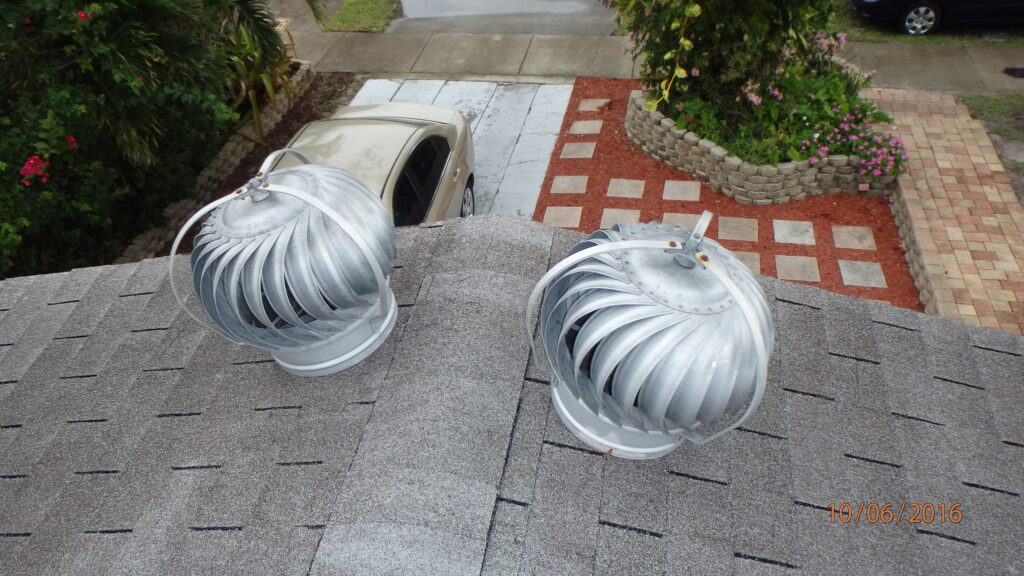
9. Roof Mount Attic Fan
Maybe the wind in your area is not enough. In this case, a roof wind turbine may not be able to do the job. In that case, you can install a roof-mount attic fan. Think of it as an exhaust fan for the roof.
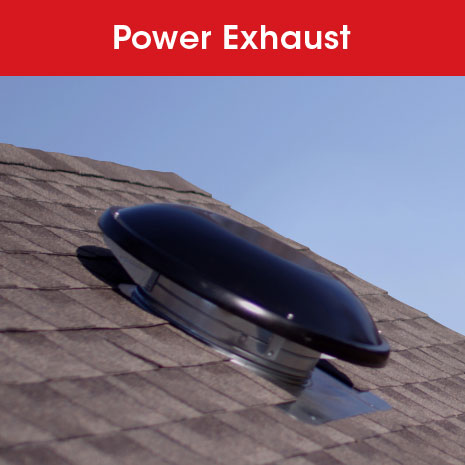
Check out 1000 CFM Mill Power Roof Mount Attic Fan from Masterflow at Home Depot. It is available in Electric, Solar, or Hybrid options.
10. Air Circulating Fan
Air Circulation is not the same as Ventilation. There is no “air change” in air circulation. Air circulation is about moving the garage air from one area to another. Air circulation has its benefits.
However, air circulation fans will accelerate the ventilation process, natural or forced, as long as there is an opening for fresh, cool air to get in and another for stale, warm air to get out!
Portable Air Conditioners & Swamp Coolers are also an option, but they are not very effective.
DIY Garage Ventilation
I understand the reluctance to adopt some of the garage ventilation options as calling a professional to do the installation pushes up the cost. Thankfully some of the above are DIY garage ventilation options that require minimal expertise.
Floor Fans or Box Fans
Floor fans or Box fans are one of the simplest and most affordable ways to ventilate your garage. These fans can be ordered from Amazon. All you need to do is plug it in.
The floor fan will help in circulating the air within the garage. A box fan can be placed on a window sill and will function as an exhaust fan. To get effective garage ventilation, consider positioning a combination of floor and box fans strategically.
The strategic combination can be quite effective at exhausting hot air and bringing in fresh air from outside. This solution is user-friendly and great for those who do not have even basic DIY skills & experience.
Garage Door Vents
Installing garage door vents is not as complicated as it may sound. Garage door vents come in various designs and can be selected to match your garage door style.
To install, you’ll need to cut an opening in your garage door and securely attach the vent. Proper sealing around the vent is essential to prevent drafts. Check out the YouTube video below.
Attic Vents
Attic vents, such as gable vents or soffit vents, are relatively simple to install. Gable vents are placed on exterior walls, while soffit vents are positioned along the eaves. These vents work together with roof vents to maintain adequate attic ventilation.
The installation process involves cutting openings and securing the vents in place. In principle, the installation is very similar to installing garage door vents.
Solar-Powered Ventilation
Solar-powered ventilation fans are eco-friendly and DIY-friendly options. They operate using energy from the sun, eliminating the need for complex wiring.
Solar vent kits typically include a solar panel, fan unit, and mounting hardware. Installation involves placing the solar panel on the roof or wall and connecting it to the fan.
Open the Garage Door & Windows
Weather permitting, keeping your garage door partially or fully open periodically will help air out your garage and drive out any musty or obnoxious smells.
The airflow is even better if you have a window in the garage wall. Open both the door and the window and you will get a very nice cross ventilation through the garage.
Bottom Line for Garage Ventilation Options
The top 10 garage ventilation options are as under:
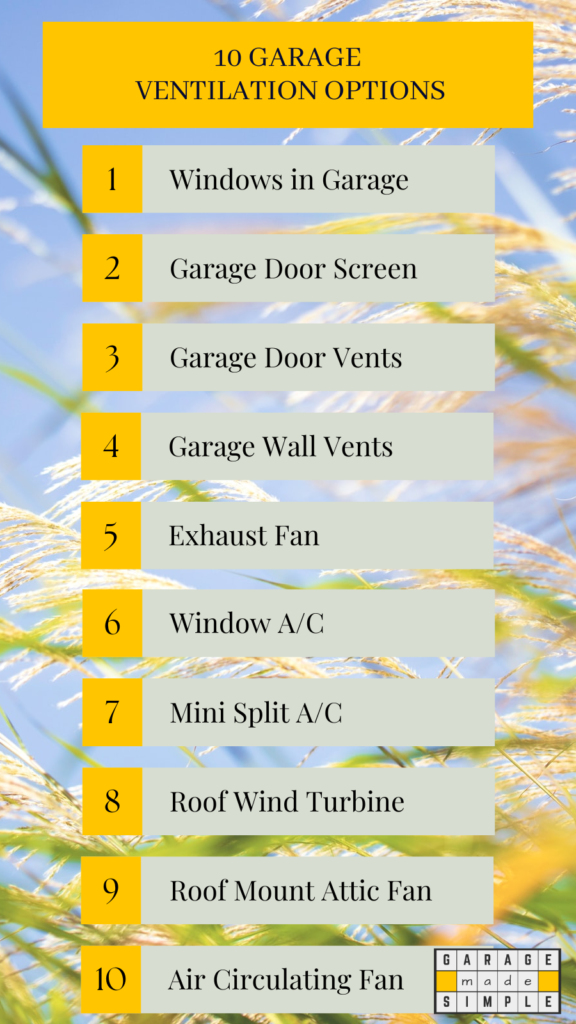
Thank you very much for reading the post. I do hope you found it informative and useful.






